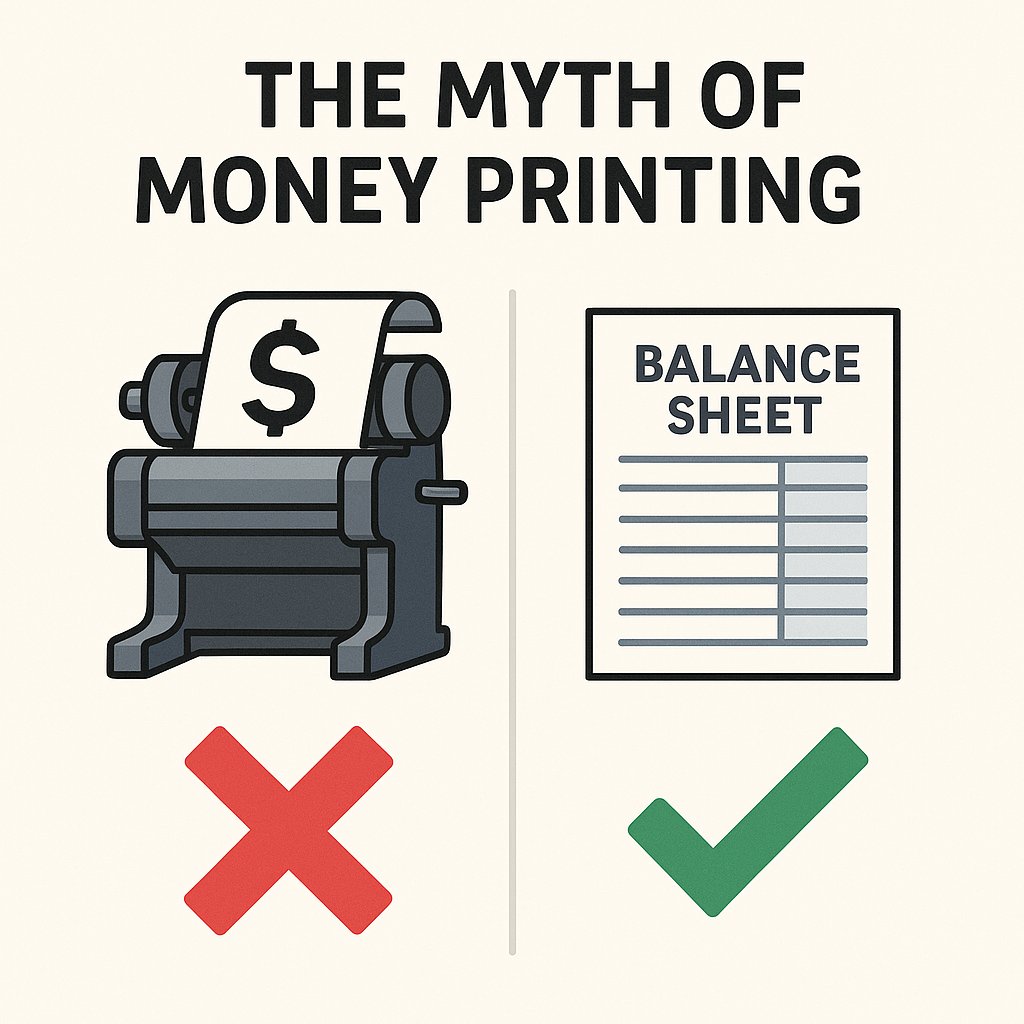Bonds always finance government spending, which is beyond what the balance is in the "Treasury Account" at the Central Bank. Governments DO NOT create reserves, and Governments DO NOT create deposits. #Page1 #MMT
Let’s start with the assumption that the Gov wants to spend $60 billion, but the treasury account only has a $50 billion balance in it. I will also assume by law the treasury account cannot go negative to adhere to some self-imposed law. #Page2 

To address this issue the Treasury will “create bonds” to cover the shortfall in the treasury account. Gov only creates IOUs. The first issue is there is not enough reserves in the banking sector to buy the bonds. #Page3 

From the Central Banks' perspective, only they can mark up and down reserve and treasury accounts held at the CB. This is the set of initial conditions I created for this illustration. #Page4 

Banks must maintain a reasonable amounts of reserves in the system to continue settling within the inter-bank market and purchase new treasury bonds, the CB comes in and buys existing bonds held by banks in exchange for reserves. #Page5 

As you can see the CB has created reserves now sitting in reserve accounts in the Banking sector, in exchange for bonds already held by banks. This is and asset swap for banks. #Page6 

From the Treasuries perspective, a liability swap happens, bonds switch hands between banks and the CB. There are changes in interest flow dynamics, but I will not cover that here as it is outside of the scope of this illustration. #Page7 

Now that the banking sector has the reserves to purchase new treasury bonds, the treasury now “creates” and auctions bonds of to the banking sector. This increases the “Treasury Account” and increases total bonds. #Page8 

The Central Bank facilitates this transaction as a liability swap between the Reserve accounts held by banks and the treasury account. #Page9 

The banking sector now gets to hold assets in the form of bonds that earn higher rates of interest than reserves. There was even a time that the Central Banks in most countries did not pay interest on reserves held by banks. #Page10 

The Government can now spend, and the Central Bank facilitates this via a liability swap between the treasury account and appropriate reserve accounts held by banks. #Page11 

Now the banking sector “creates” deposits in the private sector by marking up the correct deposit accounts where the government spending was directed. This liability is balanced by the increase in reserves. #Page12 

Governments creates bonds, Central Banks create reserves, and Banks create deposits. The CB completes operations separate from treasury functions, and they should never be aggregated together. This all still confirms STABs
The End... #Page13
The End... #Page13
• • •
Missing some Tweet in this thread? You can try to
force a refresh










